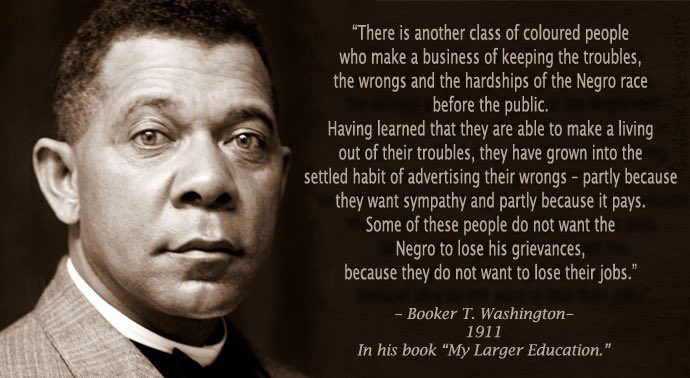George Washington: Original American Badass
Today is “Presidents’ Day,” a rather lifeless midwinter holiday that gives some people a three-day holiday and retailers the chance to flog Chinese-made consumer goods at a discount. It wasn’t always so. Before 1970, it was Washington’s Birthday, in honor of our first president, and, if you’ll stick with me through this story, a genuine American badass.
Most (I hope) Americans know he was our first president. More probably know about his false teeth and, now that the destruction of American culture is the thing, that he owned slaves than know about his life. When most people think of George Washington, they think of a rather stiff figure in a wig. Nothing could be farther from the truth. Our first president was a badass in his own right.
At a time when Europeans born in America were about 5 feet 4 inches, George Washington stood 6 feet 3 inches. He was athletic and had a charisma that attracted the attention and admiration of men and women. The scion of minor Tidewater gentry, Washington could’ve led a comparatively easy life as a planter. But that wasn’t his style. He was called to an active life that bordered on the reckless.
At the age of seventeen, he was a licensed surveyor. Family connections got him an appointment as the official surveyor of Culpeper County, VA. In 1750, at age eighteen, he began surveying wilderness tracts across the Blue Ridge Mountains in the Shenandoah Valley. Surveying the Shenandoah Valley was not a trivial undertaking.
The Shenandoah was unexplored, and the people who settled there were mostly Irish borderers — or what we now call Scots-Irish to distinguish them from the Irish Catholics who began arriving in the first third of the 19th century — who were not known for docility or paying much attention to the law.
Thomas Jefferson lamented, “The wild Irish, who had gotten possession of the valley between the Blue Ridge and North Mountain, forming a barrier over which none ventured to leap, and would still less venture to settle among.” They gathered there by choice, flowing down the Cumberland Valley from Pennsylvania, as many of them had reason to prefer to be at a distance from authorities. The British Crown wasn’t displeased. They formed a useful barrier between the French and their Indian allies and British settlements east of the Blue Ridge.
While Washington worked under the supervision of more experienced surveyors, he led independent expeditions that required him to give orders to surveying crew members much older and more experienced than he. He had a commanding presence that made that easy for him. In 1752, family influence got him appointed as adjutant general of the Virginia militia, where he quickly made a name for himself. The following year, Virginia’s lieutenant governor, Robert Dinwiddie, gave him a special mission of traveling to Fort Le Boeuf, near Erie, PA, to tell the French to get the hell out of Dodge. If you haven’t read about this mission, you really owe it to yourself. In a 77-day journey in the dead of winter, Washington and his companion, famed frontiersman Christopher Gist, faced attempted murder by Indians loyal to France and nearly died of hypothermia on a snow-covered island after their raft dumped them in an ice-filled Allegheny River.
Later in life, he showed himself physically superior to much younger men. Artist Charles Willson Peale stayed at Mount Vernon for a period in 1773 when Washington was 41 and Peale 33. This is from Peale’s diary.
One afternoon several young gentlemen, visiters at Mount Vernon, and myself were engaged in pitching the bar, one of the athletic sports common in those days, when suddenly the colonel appeared among us.
He requested to be shown the pegs that marked the bounds of our efforts; then, smiling, and without putting off his coat, held out his hand for the missile.
No sooner . . . did the heavy iron bar feel the grasp of his mighty hand than it lost the power of gravitation, and whizzed through the air, striking the ground far, very far, beyond our utmost limits.
We were indeed amazed, as we stood around, all stripped to the buff, with shirt sleeves rolled up, and having thought ourselves very clever fellows, while the colonel, on retiring, pleasantly observed, “When you beat my pitch, young gentlemen, I’ll try again”
At Jumonville Glen, he became the only individual other than Gavrilo Princip to kick off a world war singlehandedly. In the words of Sir Horace Walpole, “A volley fired by a young Virginian in the backwoods of America set the world on fire.” At Braddock’s defeat on the Monongahela, Washington had two horses shot from under him, and four musket balls passed through his clothing.
There’s a lot more to his life, but what marks George Washington as a true badass rather than just a heroic adventurer is an encounter with John Law.
Justice in colonial Virginia and Great Britain in the 18th century was very much a personal matter. If you wanted someone arrested, you had to do the leg work of getting a warrant issued. The local authorities may or may not help you apprehend the villain. When it came to trial, you had to hire a prosecutor.
This saga starts in Frederick County, Virginia, in May 1753. The exact cause is unknown, but this is what we can guess from connecting the dots. Adjutant of the Virginia Militia had prestige and brought Washington into contact with Virginia’s political elite, but it didn’t pay the rather substantial bills associated with running a couple of large farms. Washington seems to have kept his surveying business. We know he was engaged in surveying work in Frederick County in the summer of 1753. He may have been surveying, and he may have been mooning over the love of his life, Sally Fairfax, but that’s a different story.
In May 1753, a local man named John Harrow swore out a writ of capias, a type of bench warrant, against George Washington. The warrant ordered the county sheriff “to take George Washington, Gent. And hold him in your safe custody.” Washington was to answer the charge that he had trespassed on Harrow’s property and caused damages valued at £100. The sheriff attempted to find Washington, but he’d probably passed out of the area. In September 1753, Washington was again surveying the area around Winchester, VA, and the sheriff made another attempt to serve it. But Washington was out of the county before the sheriff’s deputies could find him.
The law’s luck changed for the better the following year. On April 13, 1754, the warrant was issued for a third time. This time, though, the 22-year-old Washington was not a surveyor. He was second-in-command of the Virginia regiment under Colonel Joshua Fry, sent by Lieutenant Governor Dinwiddie to capture Fort Duquesne at what is now Pittsburgh.
Washington departed Alexandria on April 2 with about 120 Virginia militia. He arrived in Winchester on April 10 and waited for the arrival of a local militia company under the command of a company of men raised by a local doctor, Adam Stephen. They were delayed for a week, gathering wagons and supplies. (Side note: wagons were in short supply on the frontier, and farmers were very reluctant to rent them to the army because they were vital to farm work, and the chances of them ever returning from military service were zero. Benjamin Franklin “convinced” Germans in Pennsylvania to lease their wagons to Braddock’s expedition by insinuating if they didn’t give them up, the British would use the tactics of armies in Central Europe. That is, they’d take the wagons and burn the farms. Read his epic broadside to Pennsylvania farmers).
At some point while Washington’s column was encamped at Winchester, Deputy Sheriff William Green arrived and informed Lieutenant Colonel Washington that he was under arrest and would be held in the county lockup until the court met in October. The note on the warrant Green returned to the county court lets us know how that encounter went.
The within named George Washington would not be taken. He kept me off by force of arms.
“By force of arms” means that Washington used either a sword or pistol to convince Deputy Green that he wasn’t interested in cooperating.
At this point, the County Sheriff put the warrant in the “too hard” box. In October, in the aftermath of Fort Necessity and as war with the French loomed, the case was dismissed.
John Harrow appears briefly once again. In the regimental account book of the First Virginia Regiment, John Harrow, a blacksmith, is paid for seven days of work at Fort Loudoun. The commander at the fort was George Washington.
The warrant is viewable on the Library of Virginia website, as is this brief history of the affair.
We’ve had all kinds of men as president, but only one of them started a world war, prevented a military coup against the government of the United States, and used either a sword or pistol to convince a deputy sheriff that he had urgent business back at the office; that was George Washington, the original American badass.





